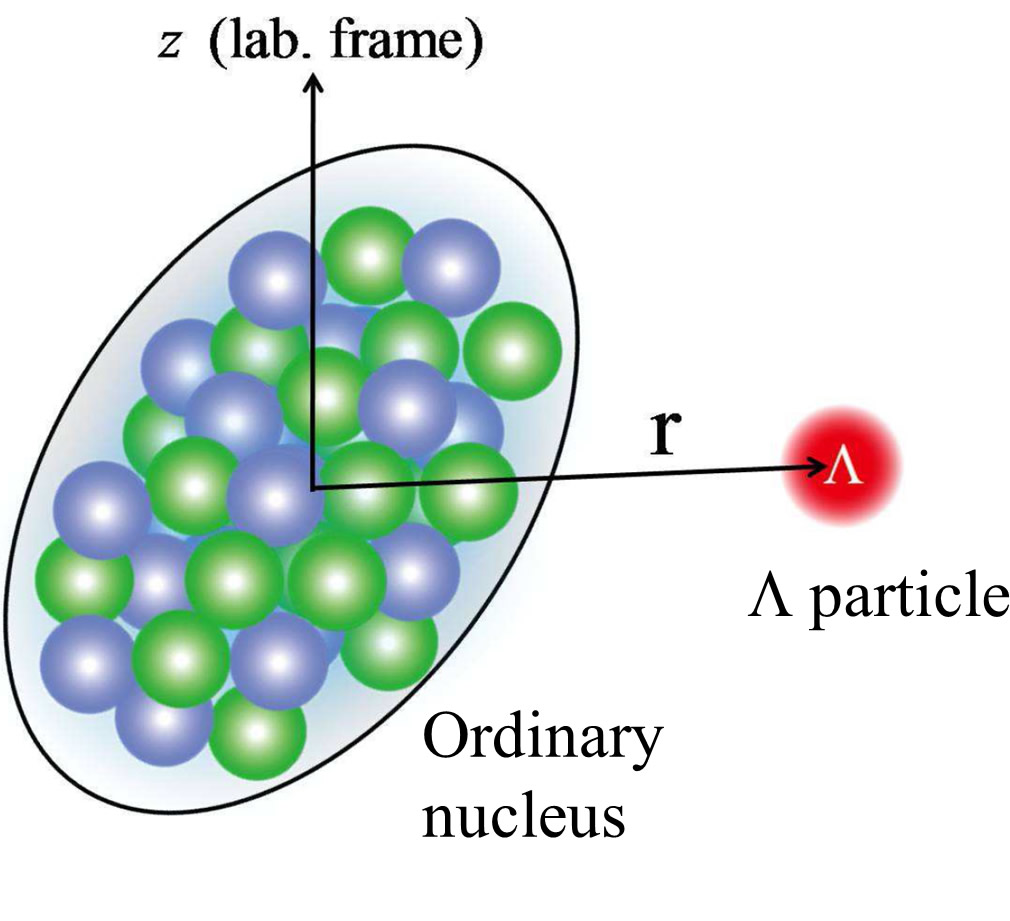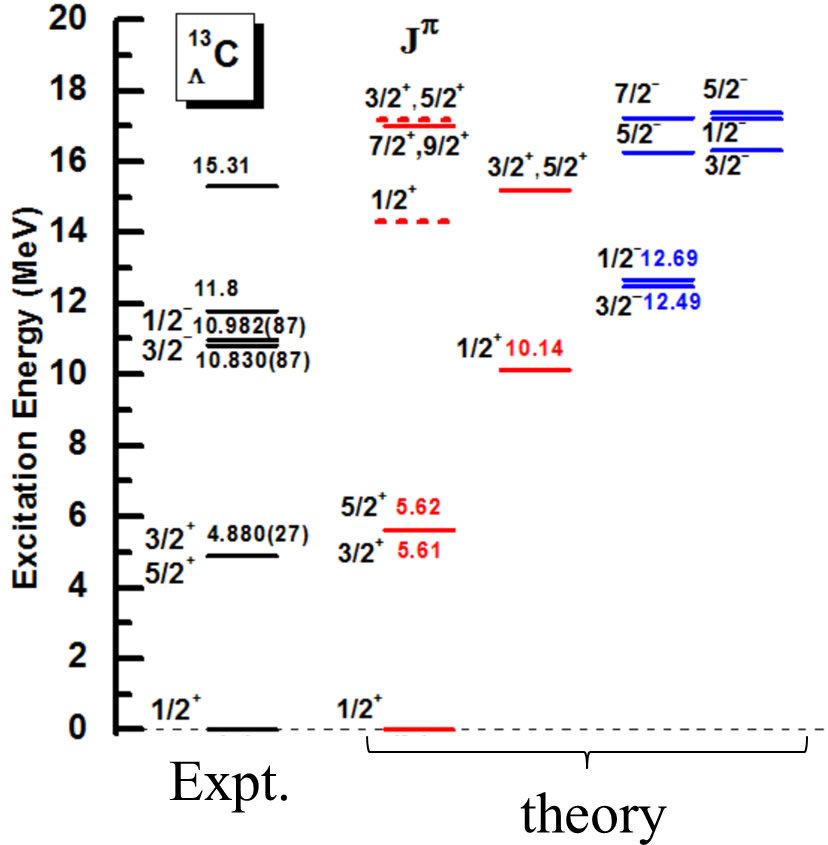Topics
2015.11.5
Hypernuclei as relativistic baryon many-body systems
Nuclear Theory Group
It has been known that the mean-field theory provides a good approximation for a description of many atomic nuclei. In this approximation, protons and neutrons are assumed to move independently, feeling a common potential well inside a nucleus. This approach has enjoyed a great success e.g., in understanding the nucleonic shell structure and magic numbers. On one hand, it is an advantage of this approach that nuclear deformation can be intuitively understood by spontaneously breaking several symmetries, such as the angular momentum and particle number conservations. On the other hand, a disadvantage of this approach is that nuclear spectra cannot be described directly. In recent years, the so called “beyond-mean-field approach” has been rapidly developing owing to the development of computer powers. In this approach, the symmetries broken in the mean-field approximation are restored by the projection technique, and in addition, a quantum fluctuation of the mean-field is also taken into account. We have applied this approach to hypernuclei, and for the first time we have succeeded in describing spectra of hypernuclei based on a relativistic baryonic many-body approach [1]. Hypernuclei are defined as ordinary nuclei with one or two hyperons, which have a strangeness degree of freedom, and they have been intensively studied both theoretically and experimentally. Our approach can be systematically applied from the light-mass region to the heavy-mass region, and is applicable also to dynamics such as collective motions of hypernuclei.
[1] H. Mei (D3 student in our group), K. Hagino (associate professor in our group), J.M. Yao (ex-assistant professor in our group), and T. Motoba (professor of Osaka Electro- Commun. University), Phys. Rev. C91 (2015) 064305.

|

|
|
| Fig.1 : A schematic figure for a hypernucleus. | Fig.2 :A spectrum of 13ΛC hypernucleus (12C + Λ). Jπ refers to the angular momentum (J) and parity (π) for each state. |

